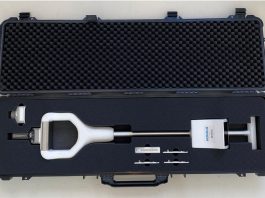Scientists from the Singapore-MIT Alliance for Research and Technology (SMART) have engineered a novel type of plant nanobionic optical sensor that can detect and monitor levels of arsenic in the environment.
This development provides significant advantages over conventional methods used to measure arsenic in the environment and will be important for both environmental monitoring and agricultural applications to safeguard food safety, as arsenic is a contaminant in many common agricultural products such as rice, vegetables, and tea leaves.
Arsenic and its compounds are a serious threat to humans and environment. Long-term exposure to arsenic in humans can cause a wide range of detrimental health effects, including heart attack, diabetes, birth defects, severe skin lesions, and numerous cancers.
Elevated levels of arsenic in soil as a result of anthropogenic activities such as mining and smelting is also harmful to plants, inhibiting growth, and resulting in substantial crop losses. More troublingly, food crops can absorb arsenic from the soil, leading to contamination of food and produce consumed by humans.
The novel optical nanosensors developed by SMART exhibit changes in their fluorescence intensity upon the detection of arsenic. Embedded in plant tissues with no detrimental effects on the plant, these sensors provide a non-destructive way to monitor the internal dynamics of arsenic taken up by plants from the soil. This integration of optical nanosensors within living plants enables the conversion of plants into self-powered detectors of arsenic from their natural environment, marking a significant upgrade from the time- and equipment-intensive arsenic sampling methods of current conventional methods.
Conventional methods are time-consuming, require extensive sample treatment, and often involve the use of bulky and expensive instrumentation. SMART DiSTAP’s novel method of coupling nanoparticle sensors with plants’ natural ability to efficiently extract analytes via the roots and transport them allows for the detection of arsenic uptake in living plants in real-time with portable, inexpensive electronics, such as a portable Raspberry Pi platform equipped with a charge-coupled device (CCD) camera.









